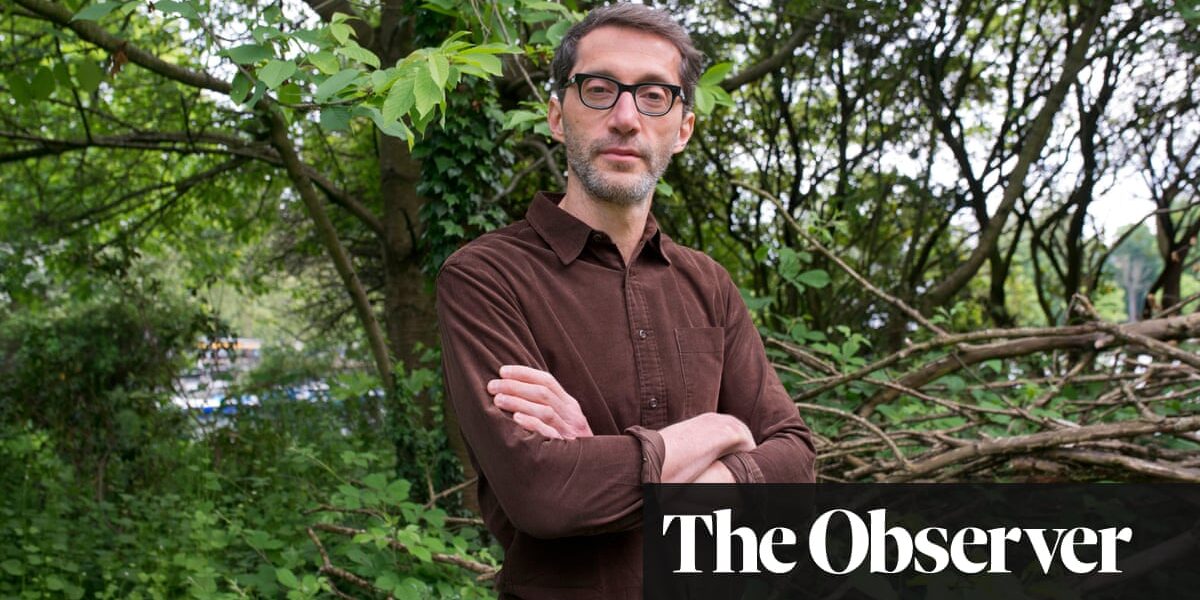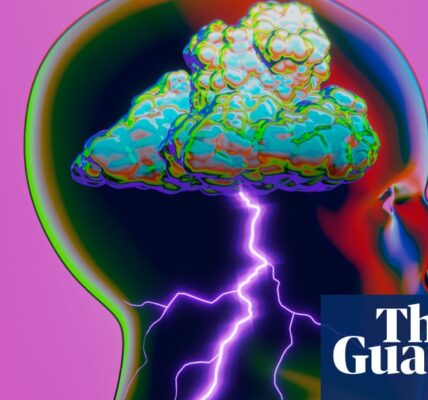Prof Andrea Mechelli: ‘People who live near green space are less likely to struggle with mental health issues’

Andrea Mechelli, a clinical psychologist and neuroscientist, is professor of early intervention in mental health at King’s College London. He is the project lead on Urban Mind, a research study co-developed with arts foundation Nomad Projects and landscape architects J&L Gibbons which since 2018 has been looking at how aspects of the urban environment affect mental wellbeing globally. Its recent findings suggest that nature – and certain features such as natural diversity and birdsong – can boost our mental health.
We know being outdoors – walking, jogging or playing sports – is good for our physical health, but what role does nature play in our mental health?
Several studies show that people who live near parks, canals, rivers – any green space – are less likely to struggle with mental health issues. And this is the case even after we account for individual differences in socioeconomics. The risk of developing depression is about 20% lower in people who live near or spend a significant amount of time near green spaces. But what we don’t know is which specific aspects of the natural environment are beneficial.
How can we access the psychological benefits of being in nature?
One of the key findings from our Urban Mind project is that you don’t need a large park to ensure that people can benefit from nature: even small pockets of green spaces can lead to measurable improvements in mental wellbeing that last over time. It’s important to reframe nature as something that is all around us. So even in a dense urban environment, you can access trees, you can hear birdsong. We found that when people can see trees, there is an increase in their mental wellbeing, and this lasts at least eight hours. We find similar results for birdsong. Small can still be impactful.
Active participation – when you perform an act of care for the landscape – can also be very powerful. For example, planting or taking care of trees will increase biodiversity but will also reduce air pollution and will have a direct benefit on our own mental wellbeing.
Emphasising the smaller scale, what could someone living in a small urban flat or house do?
Even having a small garden on a terrace, or not paving your garden but letting flowers and biodiversity take place in that space. Also watering the green areas around where you live. There is, for example, a group of individuals in London who are taking care of tree pits – they’re planting flowers and watering tree pits. This is a very small intervention but when people take care of the landscape where they live, they’re also taking care of themselves.
If you focus on the bigger picture of climate change, and biodiversity loss, it can be overwhelming. The current language can feel quite doom-and-gloom, because there’s so much emphasis on the fact that we need to change our lifestyle, and give up all sorts of commodities. And this is negative language, which is not helpful. Whereas if we reframe it in a more positive way, and we help people see that by supporting our environment and addressing climate change we’re also supporting our own health, then it becomes a win-win.
Could you tell me about your study? It used a smartphone app; how did this work?
I am a clinical psychologist who worked in mental health services in the NHS for many years. So I’m very interested in understanding why people who live in cities are at greater risk of developing mental health conditions – a well-established finding we’ve known for years. To understand this, we needed to move away from studies that simply reported an association between urban living and risk of mental illness; we needed to understand the specific factors.
I developed a smartphone app called Urban Mind, which measured people’s environment, including both social aspects and the built aspects [the built environment]. And at the same time the app measured how people felt: their levels of anxiety, stress, loneliness. I was expecting social aspects to be very important; for example, whether someone feels safe and included in their surroundings, and indeed our results indicate that they are really important. But to my surprise, the strongest effect by far was the benefit of nature. So across different countries and cultures, encounters with nature lead to an increase in mental wellbeing that lasts several hours. These benefits are evident even when people have incidental encounters with nature as they go about their daily life. For example, hearing birdsong on the way to work.
Can you tell me more about the specific effects of nature that you found?
Loneliness was of interest to us, particularly chronic loneliness, because this has been on the rise since the start of the Covid-19 pandemic and is predicted to reach epidemic proportions in the next few years. We found that people are 28% less likely to feel lonely when they are in an environment that includes natural features. For example, trees, plants or birds, compared with when they are in an environment that doesn’t include these. We also found that more diverse natural environments lead to stronger mental health than monocultural natural environments, where for example you might have only grass and nothing else.
How does nature have this beneficial effect on our minds?
First, we think that nature helps improve concentration and reduce mental fatigue. This means people’s memory and attention span improve. This is a theory that’s been around for many years; there is some evidence, especially in children, that there’s a cognitive benefit. There’s also evidence that when people have access to high quality nature they tend to exercise and socialise more in nature, which leads to the release of endorphins and other mood-boosting hormones, which are good for mental health. And there is evidence that nature can help reduce stress levels. Studies show that when people spend time in nature, their blood pressure improves. Also, levels of stress-inducing hormones such as cortisol, adrenaline and norepinephrine go down.
Have health professionals looked at prescribing nature for mental health?
It’s not part of mainstream healthcare within the NHS. So there are small projects, and the majority of these have given really positive, promising results. It has been used in a range of mental illnesses, particularly psychosis, which is a severe mental illness. People who live in cities are more likely to develop psychosis; somehow urban environments increase risk. But spending even brief periods in nature can lead to tangible improvements. It’s also been used in people with depression – and once again, the results have been encouraging. So as a mental health professional, I am puzzled as to why we are not capitalising on this resource. It’s a free intervention that can lead to measurable improvements without side-effects, which is amazing.
Source: theguardian.com



